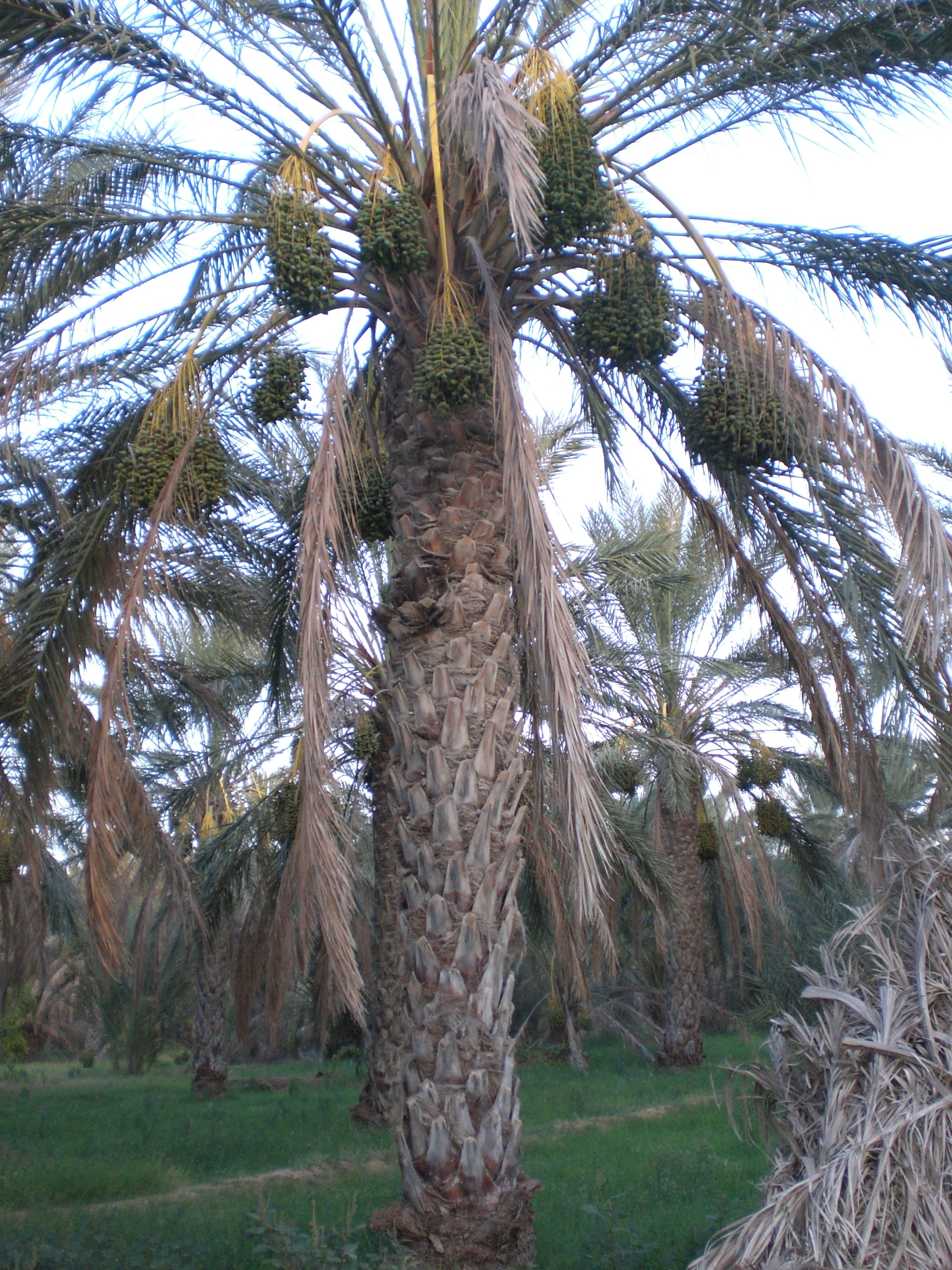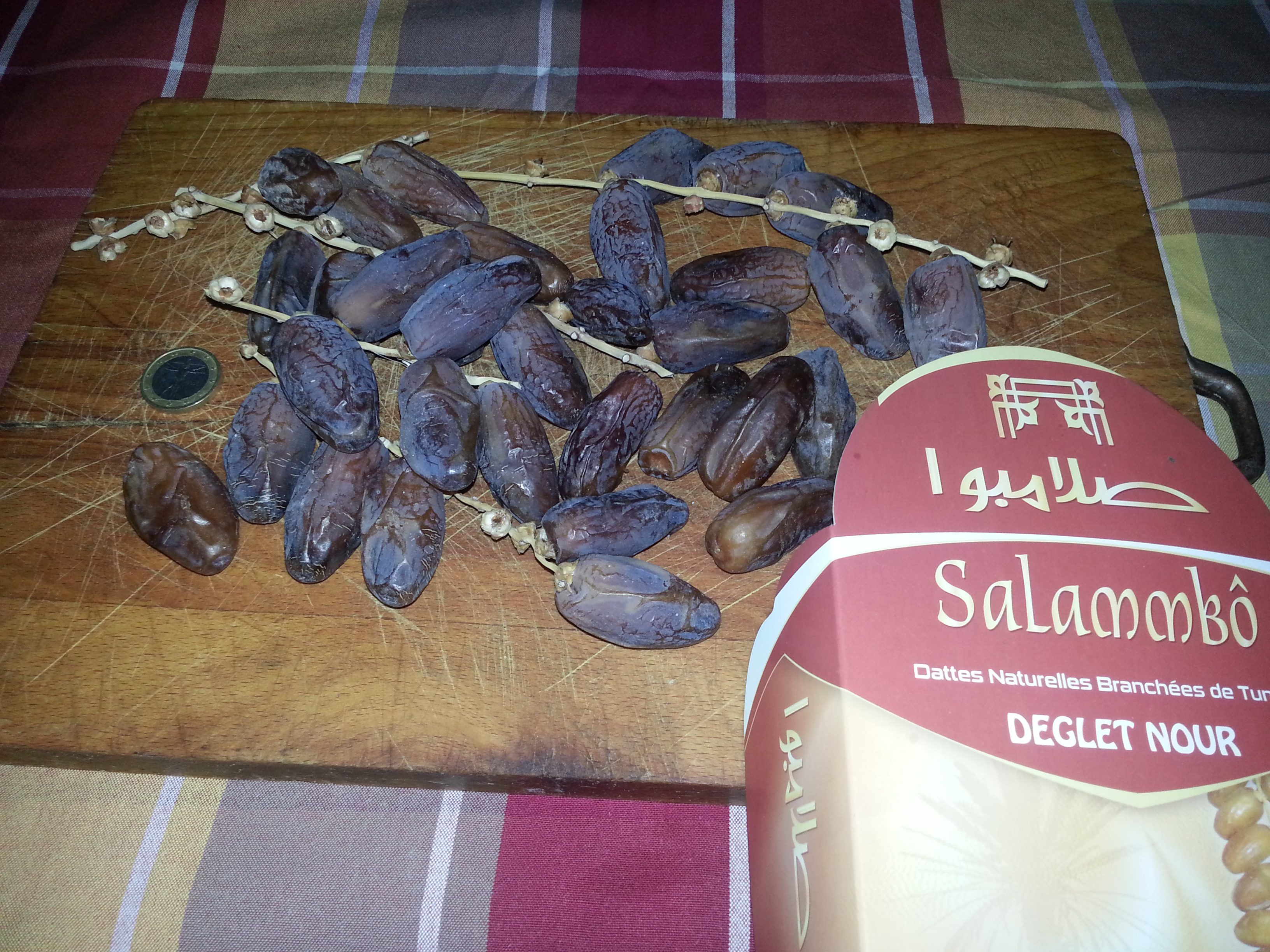Deglet Nour on:
[Wikipedia]
[Google]
[Amazon]

 Deglet Nour, also spelled Deglet Noor, is a
Deglet Nour, also spelled Deglet Noor, is a
Comparison chart of dates
Brown Date Garden, Thermal, CA.
("A Product in Search of Better Publicity"), ''African Manager: Tunisie'', September 10, 2009. {{Date cultivars Date cultivars
 Deglet Nour, also spelled Deglet Noor, is a
Deglet Nour, also spelled Deglet Noor, is a cultivar
A cultivar is a kind of Horticulture, cultivated plant that people have selected for desired phenotypic trait, traits and which retains those traits when Plant propagation, propagated. Methods used to propagate cultivars include division, root a ...
of the date palm
''Phoenix dactylifera'', commonly known as the date palm, is a flowering-plant species in the palm family Arecaceae, cultivated for its edible sweet #Fruits, fruit called dates. The species is widely cultivated across North Africa, northern A ...
that originated in the oasis of Tolga in Algeria
Algeria, officially the People's Democratic Republic of Algeria, is a country in the Maghreb region of North Africa. It is bordered to Algeria–Tunisia border, the northeast by Tunisia; to Algeria–Libya border, the east by Libya; to Alger ...
.Pierre Munier, ''Le palmier-dattier'', éd. Maisonneuve et Larose, Paris, 1973, Commonly referred to as the "queen of all dates", the authentic Algerian Deglet Nour date has a soft touch, a translucent light color and a honey
Honey is a sweet and viscous substance made by several species of bees, the best-known of which are honey bees. Honey is made and stored to nourish bee colonies. Bees produce honey by gathering and then refining the sugary secretions of pl ...
-like taste, characteristics which distinguish it from other dates.
Besides being popular in Algeria, Deglet Nour seedlings have been harvested to Libya
Libya, officially the State of Libya, is a country in the Maghreb region of North Africa. It borders the Mediterranean Sea to the north, Egypt to Egypt–Libya border, the east, Sudan to Libya–Sudan border, the southeast, Chad to Chad–L ...
and Tunisia
Tunisia, officially the Republic of Tunisia, is a country in the Maghreb region of North Africa. It is bordered by Algeria to the west and southwest, Libya to the southeast, and the Mediterranean Sea to the north and east. Tunisia also shares m ...
, and even the United States
The United States of America (USA), also known as the United States (U.S.) or America, is a country primarily located in North America. It is a federal republic of 50 U.S. state, states and a federal capital district, Washington, D.C. The 48 ...
where they are grown in inland oases and are the chief export cultivar. Sugar rationing helped the Deglet Nours grow in popularity in the US as a candy replacement. Deglet Nour is one of hundreds of cultivars of the date palm
''Phoenix dactylifera'', commonly known as the date palm, is a flowering-plant species in the palm family Arecaceae, cultivated for its edible sweet #Fruits, fruit called dates. The species is widely cultivated across North Africa, northern A ...
but is, according to the Food and Agriculture Organization of the United Nations (FAO
The Food and Agriculture Organization of the United Nations; . (FAO) is a List of specialized agencies of the United Nations, specialized agency of the United Nations that leads international efforts to defeat hunger and improve nutrition ...
), the leading date in terms of export value.
Origins
Several old works provide evidence that the Deglet Nour date was first grown in Algeria. Among them are ''Le palmier-dattier'' (The Date-Palm) by Pierre Munier, ''L'Algérie: un siècle de colonisation française'' (Algeria: A Century of French Colonization) by Félix Falck, ''Un voyage au pays des dattes'' (A Trip to the Land of Dates) by Jean-Henri Fabre, and ''le Bulletin de la Société botanique de France'' (Bulletin of the French Botanical Society). Munier states that the fruit was introduced at the end of the 13th century and the beginning of the 14th century from the oasis of Tolga to the neighboring areas ofBiskra
Biskra () is the capital city of Biskra Province, Algeria. In 2007, its population was recorded as 307,987. Biskra is located in northeastern Algeria, about from Algiers, southwest of Batna, Algeria, Batna and north of Touggourt. It is nickna ...
and Oued Righ in Algeria, before being brought to Tunisia at the end of the 17th century by a grower from Tozeur named Sidi Touati.
The Algerian Ministry of Agriculture reserves commercial usage of the Deglet Nour label for Algerian dates.
Production
Thiscultivar
A cultivar is a kind of Horticulture, cultivated plant that people have selected for desired phenotypic trait, traits and which retains those traits when Plant propagation, propagated. Methods used to propagate cultivars include division, root a ...
of date is grown mainly in Algeria ( Tolga, Oued Righ), in Tunisia (in the areas of Jérid and Nefzaoua Nefzaoua () is a region of southwest Tunisia bounded by the salt lake Chott el Djerid to the west, the Grand Erg Oriental to the south, and the Dahar plateau to the east.California
California () is a U.S. state, state in the Western United States that lies on the West Coast of the United States, Pacific Coast. It borders Oregon to the north, Nevada and Arizona to the east, and shares Mexico–United States border, an ...
, Arizona
Arizona is a U.S. state, state in the Southwestern United States, Southwestern region of the United States, sharing the Four Corners region of the western United States with Colorado, New Mexico, and Utah. It also borders Nevada to the nort ...
and Texas
Texas ( , ; or ) is the most populous U.S. state, state in the South Central United States, South Central region of the United States. It borders Louisiana to the east, Arkansas to the northeast, Oklahoma to the north, New Mexico to the we ...
), where this cultivar was brought at the beginning of the 20th century.
Notes
References
External links
Comparison chart of dates
Brown Date Garden, Thermal, CA.
("A Product in Search of Better Publicity"), ''African Manager: Tunisie'', September 10, 2009. {{Date cultivars Date cultivars